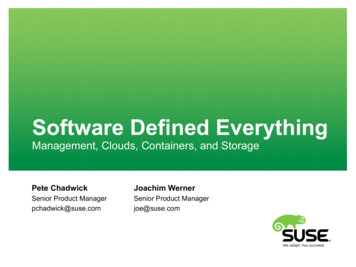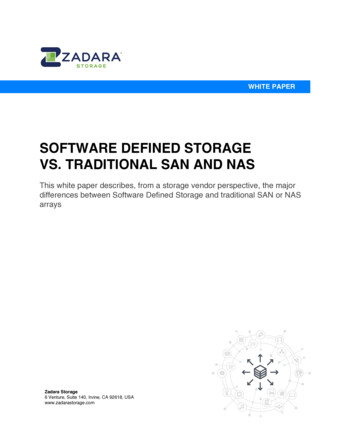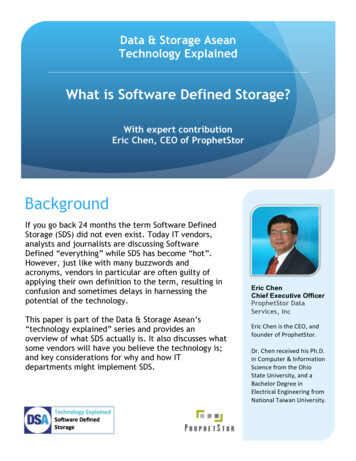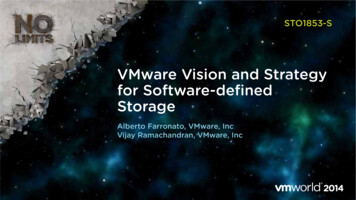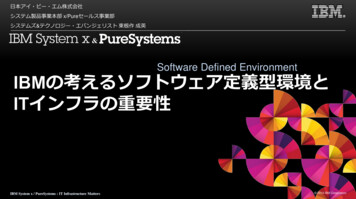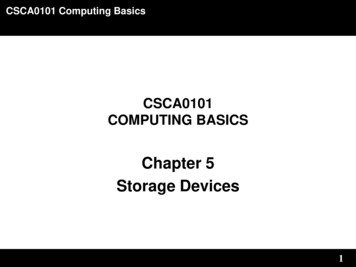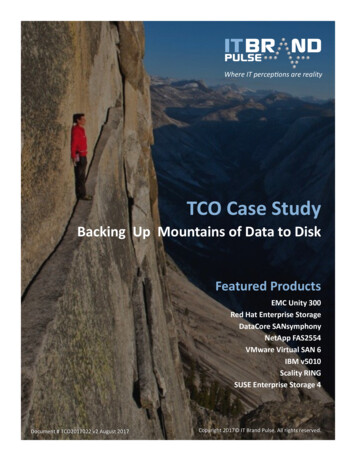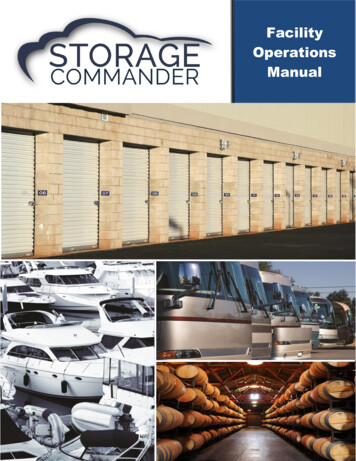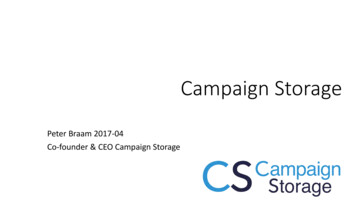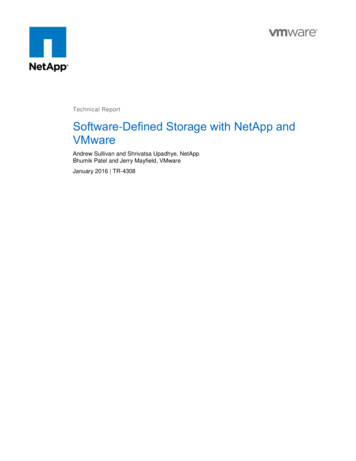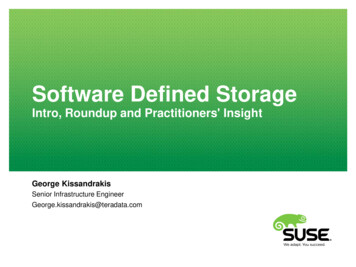
Transcription
Software Defined StorageIntro, Roundup and Practitioners' InsightGeorge KissandrakisSenior Infrastructure EngineerGeorge.kissandrakis@teradata.com
Introduction
Who Am I Who am I–Linux Administrator 20 years (16 professional)–Experience in security–Experience in Storage Solutions–Experience in Virtualization–MSc in ITMore for me: https://de.linkedin.com/in/kissand3
Teradata What Teradata does– “Big Data”What Teradata DMC–“Digital Marketing Center”More for Teradata: http://www.teradata.de/4
Software Defined Storage (SDS)
Traditional storage solutions NAS appliances– SAN appliances– 6NFS,CIFS, iSCSI,etcFC, iSCSISoftware on a Sever–NFS service on Linux, CIFS service on Windows–Gluster FS,DRBD
What is SDS WikiPedia: Software-defined storage (SDS) is an evolving concept for computerdata storage software to manage policy-based provisioning and management ofdata storage independent of the underlying hardware–7What’s the difference with traditional storages–Virtual provisioning, deduplication, deplication, snapshots,backups–SLAs for performance–Easy scale out–Commodity hardware–Separates Software from Hardware
Software based storage solutions8 Ceph GlusterFS Hadoop(?) Vendor specific–VMware Virtual SAN–EMC ScaleIO–HP StoreVirtual VSA–Microsoft 'Clustered Storage Spaces' and 'Storage Spaces Direct‘–etc
New technologies : virtualization/cloudcomputing9 Thin provisioning Easy usage Levels of performance Levels of data security
New needs in virtualization for data10 Data need to be safe Data need to be available Data need to be accessible
New needs for flexible management11 Commodity hardware Storage technology independent (SATA,SAS,ATA,FC) Separate hardware management from the service itself
New demands on virtualization 12Transparent hardware maintenance–Replacement–Extend Block API Live migration
Ceph features 13Object Storage–Librados–Rest Gateway Block Storage File System over Network
How ceph works: Architecture diagram14
How ceph works: Data flow for blockapi15
Ceph implementationrecommendations (separate disks,dedicated ceph network)16 Enough CPU/RAM One OSD to one disk (no raid,no multiple OSD on a disk) Different buckets for different disk types Many controllers Separate dedicated network for CEPH
Managing ceph17 Monitor (hosts, disks, services) Repair (data integridy) Replace (disk,host) Resize (add hosts/disk, remove hosts/disks) Reconfigure Upgrade
Using ceph18 Create or import volumes (virtual disks) Export volumes Snapshots Clones
Advanced setupBuckets (separate disk types)QoSGeo replication19
How to use buckets in Openstack Two buckets: sata01 and sas01 505 root@junoserver: # ceph osd dump grep volumes pool 3 'volumes' replicated size 2 min size 1 crush ruleset 4 object hashrjenkins pg num 1024 pgp num 1024 last change 191116min read recency for promote 1 stripe width 0 pool 9 'volumes1' replicated size 2 min size 1 crush ruleset 3 object hashrjenkins pg num 256 pgp num 256 last change 206056min read recency for promote 1 stripe width 0 Crush map ruleset in cephrule sata01 {ruleset 3type replicatedmin size 1max size 10step take sata01step chooseleaf firstn 0 type hoststep emit}20rule rule sas01 {ruleset 4type replicatedmin size 1max size 10step take sas01step chooseleaf firstn 0 type hoststep emit}
Usual problems/How ceph handlesdisasters21 OSD fail (disk/service) Host fail Monitor fail Split brain Disaster (power outage)
Benchmarks22
Benchmarks23
Thank you.24
26Corporate Headquarters 49 911 740 53 0 (Worldwide)Maxfeldstrasse 590409 NurembergGermanywww.suse.comJoin us on:www.opensuse.org
Unpublished Work of SUSE. All Rights Reserved.This work is an unpublished work and contains confidential, proprietary, and trade secret information of SUSE.Access to this work is restricted to SUSE employees who have a need to know to perform tasks within the scope oftheir assignments. No part of this work may be practiced, performed, copied, distributed, revised, modified, translated,abridged, condensed, expanded, collected, or adapted without the prior written consent of SUSE.Any use or exploitation of this work without authorization could subject the perpetrator to criminal and civil liability.General DisclaimerThis document is not to be construed as a promise by any participating company to develop, deliver, or market aproduct. It is not a commitment to deliver any material, code, or functionality, and should not be relied upon in makingpurchasing decisions. SUSE makes no representations or warranties with respect to the contents of this document,and specifically disclaims any express or implied warranties of merchantability or fitness for any particular purpose.The development, release, and timing of features or functionality described for SUSE products remains at the solediscretion of SUSE. Further, SUSE reserves the right to revise this document and to make changes to its content, atany time, without obligation to notify any person or entity of such revisions or changes. All SUSE marks referenced inthis presentation are trademarks or registered trademarks of Novell, Inc. in the United States and other countries. Allthird-party trademarks are the property of their respective owners.
WikiPedia: Software-defined storage (SDS) is an evolving concept for computer data storage software to manage policy-based provisioning and management of data storage independent of the underlying hardware -What's the difference with traditional storages - Virtual provisioning, deduplication, deplication, snapshots,backups
